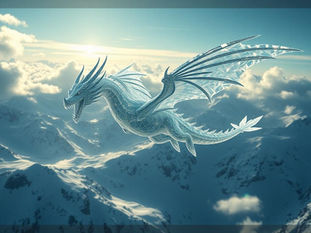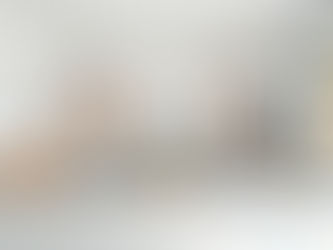
Elevate Your Midjourney Images: Control Style and Character with Advanced Tips
May 12
6 min read
0
1
0

Midjourney is an amazing tool for creating images from text cues. But did you know you can go beyond just typing a description? Recent updates give you powerful ways to control the look and feel of your images, plus even speed up your workflow. Let's look at features like style references, character references, moodboards, editing tools, and some prompting tips to make your Midjourney creations even better.
Mastering Style with Sref
Style reference, or sref, is a powerful way to give your generated images a specific artistic flair. Instead of just describing the content, you can point Midjourney to an existing image or use a style code to dictate the aesthetic.
Imagine using the same basic prompt, like describing a simple scene. By just changing the sref applied, you can get dramatically different results. One sref might give you a soft, poetic look with pastel colors and fog. Another could make the image look like an old horror movie poster, or perhaps resemble vibrant Japanese illustration. The variety is huge.
How to Use Sref
You can use sref in a few ways:
Use a style code: If you know a specific sref code you like (often shared by other users), you add `--sref` followed by the code to your prompt.
Use an image: You can upload an image you like, or use an image from your Midjourney gallery. When you interact with the image options, look for "reference style" ( often shown with a paperclip icon initially). Midjourney will analyze the style of that image and apply it to your new generation.
Sref Tips: Explore Styles Faster
Want to see what's possible? Try using `--sref random` in your prompt. Midjourney will pick a random style from its vast library. To see several random styles quickly, combine this with the `repeat` function. Typing `/imagine prompt: a subject --sref random --repeat 4` will generate four versions using different random styles, saving you time.
Control Style Strength with SW
You can adjust how strongly the reference style is applied using the `--sw` parameter, which stands for "style weight." This goes from 0 to 1000. A lower number (like `--sw 10`) means the sref has a subtle influence, while a higher number (like `--sw 1000`) makes the generated image very closely match the reference style. The default is usually 100.
Ready to take control of your Midjourney creations? Check out the Midjourney Automation Suite from TitanXT to streamline your prompting experimentation and manage your generations.
Keeping Characters Consistent with Character Ref
Character reference, or character ref, is designed to help you keep a consistent character across different images. It's still an evolving feature, but it can produce interesting results.
If you have a specific character image you like, you can use it as a character reference. Then, you can change the prompt to put that character in different poses, environments, or scenarios. Midjourney will try to keep the main features of the character consistent.
How to Use Character Ref
Similar to sref, you use an image. Upload or select an image of your character. When interacting with the image options, choose "character reference" (often shown with a small person icon). Then, add your prompt describing the scene you want the character in, plus `--cref` followed by the image URL or ID.
Note: While you can use personal photos, Midjourney often struggles to accurately replicate people from them. Images generated by Midjourney itself tend to work better as character references.
Control Character Consistency with CW
The `--cw` parameter controls the "character weight," affecting how much Midjourney tries to replicate the reference character. This ranges from 0 to 100. At `--cw 100` (the default), Midjourney focuses on both the face and clothing/body style of the reference. At `--cw 0`, it focuses only on the face, allowing the prompt to dictate clothes and body more freely.
Shaping Your Aesthetic with Moodboards and Personal Style
Midjourney offers ways to train it on your personal likes and to create collections of style inspiration.
Personal Profile (Global Profile)
You can actively train Midjourney to understand your preferred aesthetic. By going to your settings and rating images (liking or disliking), you help Midjourney refine your "Global Profile." Over time, generations can start to lean towards your personal style preferences.
Moodboards
Moodboards are curated collections of images that define a specific style, theme, or look you want to apply. You can create moodboards by uploading images or selecting from your gallery.
Once created, you can apply a moodboard to your prompts. You can do this by getting a specific code for the moodboard (`--mb [code]`) or by selecting the moodboard directly in your Midjourney settings (by activating the customization and choosing the moodboard name).
You can even combine multiple moodboards or combine a moodboard with your personal profile to blend different influences.
Remixing Images with the New Editor and Retexture
Midjourney's editor has been updated, offering more control over existing images.
The Old vs. New Editor
The older editor was mainly used to erase parts of an image and have Midjourney regenerate just those sections based on the original prompt. The new editor provides a dedicated space with more functions.
New Editor Features
In the new editor (accessible via the "Edit" button on an image or the dedicated editor section), you can easily make basic edits like resizing, cropping, and moving the focal point. You can edit images from a URL or even upload personal images.
Retexture
This is a highlight of the new editor. Retexture lets you take an image and apply a new style or concept to it while keeping its basic structure and form. It's different from just generating a new image. You provide a base image and then add a prompt, sref, or moodboard. Midjourney then re-imagines the image in that new style.
For example, you could take a simple diagram, apply a specific sref or moodboard, and Midjourney will render the diagram in that artistic style. You could take a sketch or a photo and apply different styles through retexture to see wildly varied artistic interpretations of the same source.
Streamline your style experiments and manage your creative process with the Midjourney Automation Suite from TitanXT.
Get Prompts Faster with Drag and Drop
Finding the right words to describe an image style you like just got easier.
Previously, you might have had to use specific commands or look up image details in your history to get a descriptive prompt. Now, there's a much faster way. If you see an image you like, whether it's in your gallery, the explore section, or even from an external source, you can simply drag the image file into the Midjourney prompt window. Midjourney will analyze the image and automatically generate several different prompt suggestions describing the scene, style, and elements. You can then use any of these generated prompts with a single click.
Essential Midjourney Parameters
Beyond sref and character ref weights, several other parameters fine-tune your results:
`--chaos [0-100]`: Higher values create more varied and unexpected results in the image grid.
`--stylize [0-1000]`: Controls how much artistic flair Midjourney adds. Default is 100, but often set to 200. Higher values (like 700-1000) create very aesthetic images, sometimes drifting from the prompt.
`--raw`: Often used for more realistic images and tends to stick closer to the prompt.
`--quality [0.5, 1, 2]`: Affects detail level and generation time. 2 is the highest quality with most detail.
`--weird [0-3000]`: Adds unusual characteristics to the image.
`--p`: Activates your personalized style profile.
`--no [element]`: Excludes specific items from the generation (e.g., `--no trees, cars`).
Creative Prompting Experiments
Don't be afraid to try different types of inputs.
Mathematical Prompts
[P]Some users explore generating images from mathematical formulas, often finding inspiration using tools like Processing and sharing codes online (like on Twitter). You can sometimes use these codes directly as prompts to get unique abstract or geometric art.[/H3]
Random Text Prompts
[P]Believe it or not, you can sometimes get interesting results just by typing random text. While it might seem chaotic, Midjourney can turn unexpected word combinations into surprising and unique images.[/H3]
These advanced tools and tips can help you move from basic image generation to directing Midjourney with greater control and creativity. Experiment with srefs, character refs, moodboards, retexture, and different parameters to discover your unique artistic voice.
Ready to streamline your Midjourney workflow and spend less time on manual tasks? Discover the power of automation with the Midjourney Automation Suite from TitanXT.






